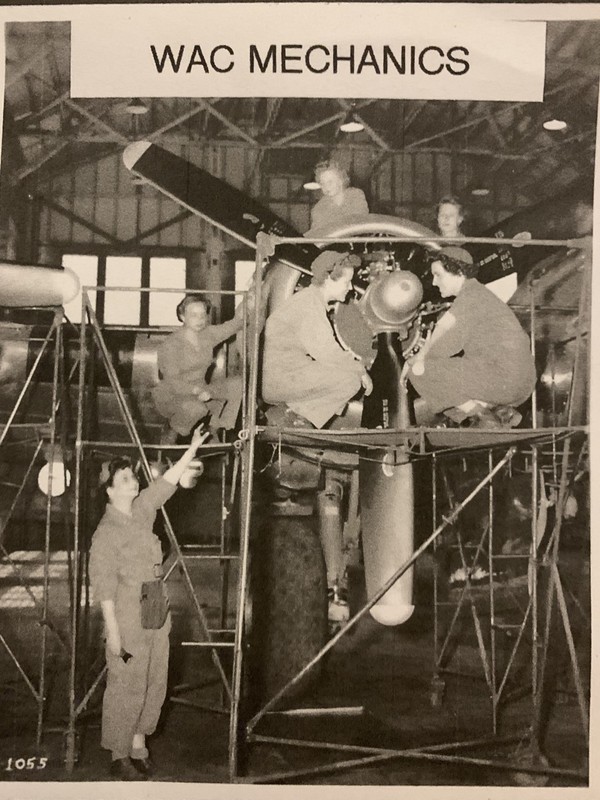Kearney Air Force Base/Kearney Regional Airport
Introduction
Text-to-speech Audio
Images
WAC mechanics work on a propeller blade

WASP and WAC members stand at attention

Backstory and Context
Text-to-speech Audio
When the Japanese attacked Pearl Harbor, the world was thrown into turmoil and the United States was forced into yet another conflict. Many Americans wanted to do their part in helping see democracy prevail over fascism. Many in Nebraska had enlisted and would be processed at the city of Kearney. In Kearney, a new airbase and processing hub was opened by the military to determine which front Americans would be fighting on. Most would see combat in Europe, some in Asia. The impact the airbase had on the city was tremendous. New clubs and housing had to be established for troops staying in the city. Most didn’t have room to spare in hotels due to the influx of troops. As the troops rolled in from across the United States, the citizens of Kearney handled the extra problems and concerns well.
The WASPS (Women’s Airforce Service Pilots) and WAC (Women’s Army Corps) were a key part of the airbase’s functions not only in their contribution to the war but in general. Various clubs and buildings were founded to keep morale and troops in check and reserve for themselves some rest and recovery. The Hostess Club was a club that had women and men meet in a controlled environment. Men had to be 18, single, and have an excellent moral standing to gain entry. Women also worked in repairing bombers and in electrical, Blacksmithing, and repair stations for equipment damaged in test flights and even in combat.
Many young American women had enlisted in the WAC or WASPS to contribute their effort to the war. One such was a Mrs. Marian Brown, who was the secretary in the Quartermaster's office. She was responsible for the organization of the deployed or soon to be deployed troops during the war and was in charge of rationing and water distribution amongst the troops.
The Kearney Air Force Base closed in 1949 and still holds resonance with the past, as many brave souls marched onto the tarmac and beyond the call of duty to serve their country. Only one original piece of the airfield remains - a metal hanger on the airfield itself. This hangar was one of several that housed many aircraft during the war. It stands today as a testament to the valiance, bravery, and courage many had then.
Sources
Howell, Alice Shaneyfelt . The Kearney Army Air Base. Buffalo Tales, vol. 11, no. 5. Published May 1st 1988. BCHS.
Kearney Goes to War. Rosdail, Jacob. USA. 2016.
Wink, Joyce . WOMEN IN THE MILITARY . Edition 1. Volume 1. 1. Kearney, NE. Ft. Kearny Genealogical Society , 2003.
Wink, Joyce . WOMEN IN THE MILITARY . Edition 2. Volume 1. 2. Kearney, NE. Ft. Kearny Genealogical Society , 2005.
BCHS
BCHS
